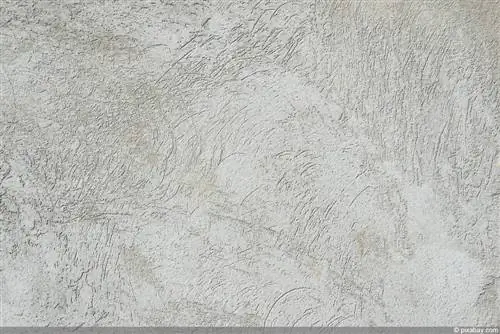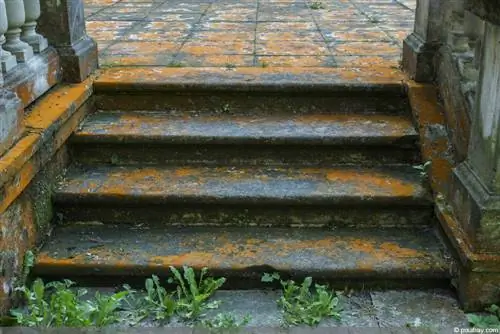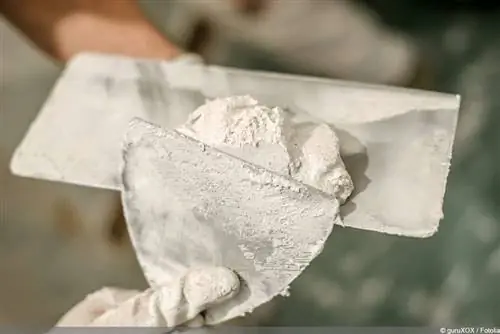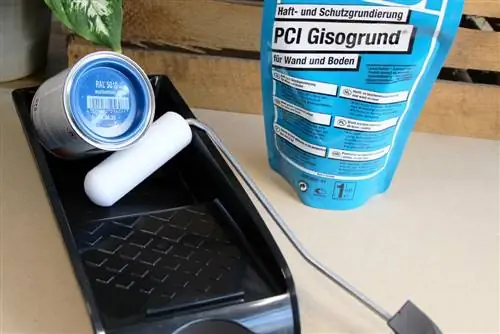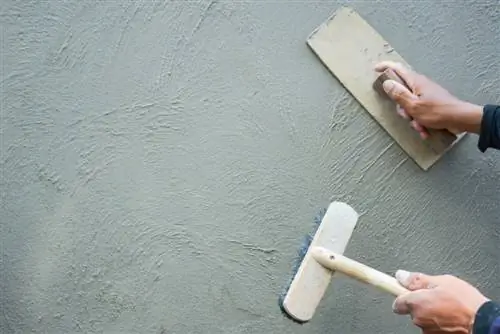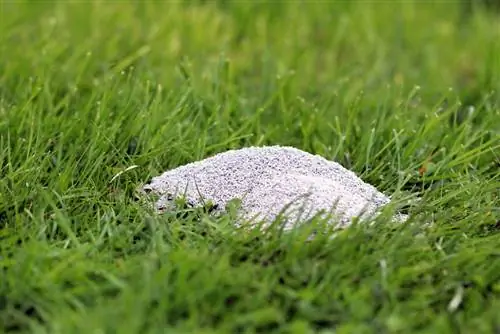- Author admin [email protected].
- Public 2023-12-17 03:39.
- Last modified 2025-06-01 06:48.
Whether a wall needs to be plastered on the outside or inside, rub plaster is a good choice for both areas due to its properties. It is also versatile and can be selected to suit the local conditions. Our tips and instructions show what is important during processing from application to painting.
Rubbing plaster - selection and differences
Rubber plaster is basically offered as synthetic resin plaster and mineral plaster. The mineral plaster variant is more absorbent and breathable or open to diffusion. This has a positive effect on the room climate and prevents moisture from building up.
As a synthetic resin variant, the plaster is already prepared ready for use. This is practical because no agitator is required and the plaster does not have to be mixed yourself. However, due to the synthetic resin, these versions are less or not at all open to diffusion. This can have a detrimental effect on the indoor climate.
Of course, the two versions also have similarities. Below:
- Easy to apply and therefore also possible for laypeople
- durable, resistant and robust
- suitable for inside and outside
Prepare the substrate
Preparing the surface for plastering is no different from the necessary steps for other types of plastering. The following steps and factors are important:
Clean the surface
The surface must be free of dust, grease, moss, plant residues and other dirt. Otherwise the adhesion of the rubbing plaster to the wall will be impaired. Cleaning can be done with water pressure or sandblasting.
Repair cracks and holes
Particularly in the case of fine cracks or slight dents, many people hope that the unevenness will no longer be noticeable after plastering. Unfortunately, the plaster cannot compensate for this. Therefore, they should be repaired beforehand with an appropriate filler. Products with plaster are ideal for indoor use. Cement-based variants are the better choice for outdoor use. After the repair, the filler should be allowed to dry thoroughly.
Drying
In order not to negatively affect the durability of the rubbing plaster, the surface must be dry. This is of course easier to do indoors than outdoors. Outdoors, the appropriate weather must be adjusted so that no precipitation falls for several days.
Prepare for plastering
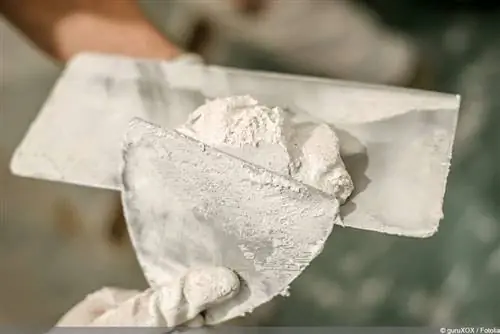
After the surface has been prepared accordingly, deep primer and primer can be applied, if necessary. The deep primer changes the receptivity of the surface and prevents too much paint from being absorbed afterwards. The primer evens out stains and covers them evenly, creating an even surface. This means that the result after plastering is of higher quality.
Utensils
Some utensils are required for using the plaster - both for the first plastering and for repairs. For example:
- Mortar bucket and electronic agitator, for mineral plasters
- Protective clothing and goggles as well as gloves
- Covering film, masking tape and boards
- Masonry trowel and smoothing trowel
- Grapewrap
- Spray bottle
- Brush
- floater
Plastering
Once all preparations have been made, plastering can begin. The following steps should be followed:
- Mix the plaster if necessary or stir until a homogeneous mass is formed. Lumps and knots should be thoroughly removed. When mixing mineral plasters with water, you should pay close attention to the manufacturer's instructions when mixing with water. If the synthetic resin plaster still needs to be diluted with water, this also applies.
- The plaster is applied to the wall with a trowel and then immediately distributed evenly with a smoothing trowel.
- In order to achieve a really even result, the plastered wall should be scraped off with a grape brush. The profiles on this utensil help to achieve an even thickness of the plaster layer over the entire surface.
- When the plaster has dried to such an extent that excess plaster falls off when using the float and it is not smeared or shiny, the surface can be structured. Circular movements, strokes, diagonal or horizontal patterns and structures can be introduced.
In this respect, the application of plaster does not differ from the distribution of other types of plaster. However, we have a few tips for rubbing plaster:
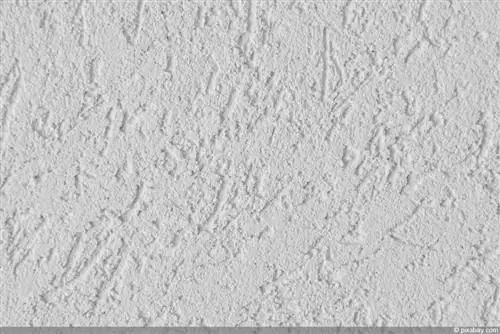
Better with two
The mineral version dries very quickly. It is therefore best to apply it with two people. One applies the plaster, the second smoothes it.
Subsequent balancing
Is there still a dent or a place where the plaster was applied too thickly - but the plaster has already dried slightly? It can then be moistened with water using a spray bottle and then leveled out. However, this only works within the first few hours after application.
Use sparingly
Some things will fall down when plastering. If the area in front of the wall is covered with foil or protected by boards, the plaster can be picked up again with the trowel and reused. This saves material and costs.
Paint
Painting the plaster is possible but not always necessary. If you want to color it, you can choose a tinted variant directly or - depending on the variant - add color to the plaster before it is applied. If you decide to paint or want to change the color of the plaster later, you should choose ordinary wall paint. It is important that it is designed to be suitable for indoor or outdoor use. The following points should also be taken into account when painting:
Let the plaster dry
The paint will only last if the surface is completely dry. After plastering or rain, you have to wait accordingly.
Cleaning plaster
Again, dust and other dirt are disruptive factors. The plaster should therefore be vacuumed or at least swept away.
Use primer
So that the surface does not absorb too much paint and a large number of coats are required, the plaster should be primed. This also reduces paint consumption and thereby reduces costs and effort.
Use the right utensils
So that the paint gets into the recesses of the rubbing plaster, you should use a long-pile paint roller. It may also help to dilute the paint slightly with water to make it easier to spread.
Mending
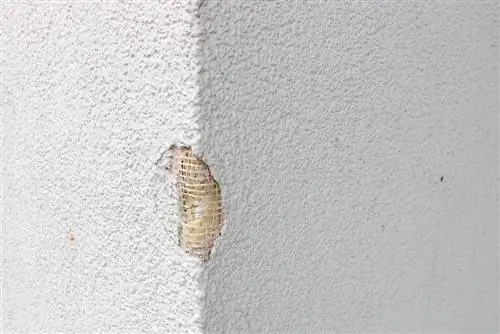
When repairing holes or other damage in the plaster, the procedure is basically the same as when applying the rubbing plaster for the first time:
- The surface is freed from loose plaster residues and dirt and cleaned thoroughly.
- The wall must dry sufficiently.
- After applying the deep primer and when it has dried out, the mixed rubbing plaster is applied and smoothed out.
- The transitions between the still damp and the old plaster are equalized with a brush.
- When the plaster is slightly dry, the structure is adjusted using a float.

